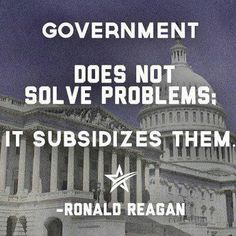When writing about the Golden State, I generally focus on fiscal policy. After all, California is trying to become the France of America by imposing punitive tax rates and continuously expanding the burden of government spending.
And since this leads to the loss of jobs and competitiveness, California offers a helpful reminder that bad policy has consequences.
But let’s now look at another example of misguided policy in California. The state is suffering a drought, which obviously isn’t the fault of state lawmakers, but policies imposed by those lawmakers are turning the drought from a problem to a crisis.
The Wall Street Journal opines on the issue.
The liberals who run California have long purported that their green policies are a free (organic) lunch, but the bills are coming due. Lo, Governor Jerry Brown has mandated a 25% statewide reduction in water use. Consider this rationing a surcharge for decades of environmental excess. …During the last two winters amid the drought, regulators let more than 2.6 million acre-feet out into the bay. The reason: California lacked storage capacity north of the delta, and environmental rules restrict water pumping to reservoirs south. …no major water infrastructure project has been completed in California since the 1960s. Money is not the obstacle. Since 2000 voters have approved five bonds authorizing $22 billion in spending for water improvements. Environmental projects have been the biggest winners. …studies show that mandates and subsidies for low-flow appliances like California’s don’t work because people respond by changing their behavior (e.g., taking longer showers). Despite the diminishing returns, Mr. Brown has ordered more spending on water efficiency.
In other words, the government-run system for collecting and distributing water is suffering because of a failure to generate enough supply and because non-price mechanisms aren’t very effective at limiting demand.
So what would work?
The WSJ suggests market-based pricing.
And the good news is that it is a small part of the Governor’s new proposal.
The most proven strategy to reduce water consumption is market pricing with water rates increasing based on household use. …To his credit, the Governor has instructed the State Water Resources Control Board to develop pricing mechanisms… Not even Gov. Brown can make it rain, but he and other politicians can stop compounding the damage by putting water storage, transportation and market pricing above environmental obsessions.
By the way, it’s worth noting that market-based pricing is actually the most effective way of achieving the environmental goal of conservation.
So if you want more water for fish, make sure it’s priced appropriately.
To elaborate on this topic, Megan McArdle, writing for Bloomberg, explains that subsidized water encourages overuse.
California’s problem is not that it doesn’t have enough water to support its population. Rather, the problem is that its population uses more water than it has to. And the reason people do this is that water in California is seriously underpriced… While the new emergency rules do include provisions for local utilities to raise rates, that would still leave water in the state ludicrously mispriced. …the average household in San Diego pays less than 80 cents a day for the 150 gallons of water it uses. …Artificially cheap water encourages people to install lush, green lawns that need lots of watering instead of native plants more appropriate to the local climate. It means they don’t even look for information about the water efficiency of their fixtures and appliances. They take long showers and let the tap run while they’re on the phone with Mom. In a thousand ways, it creates demand far in excess of supply.
Megan agrees with the WSJ that market-based prices are far more effective in controlling demand than non-market restrictions and mandates.
Having artificially goosed demand, the government then tries to curb it by mandating efficiency levels and outlawing water-hogging landscaping. Unfortunately, this doesn’t work nearly as well as pricing water properly, then letting people figure out how they want to conserve it.
And while it may be a challenge to figure out the “market rate” when water is being provided by a government monopoly, it’s safe to say that this rate is a lot higher than it is today.
…we could set some minimum amount of water that would be sold at a very cheap rate, with any excess charged at market rates to reflect the actual supply and the cost of providing it. This would be hugely unpopular with homeowners who have big lawns as well as with farmers.
There’s a semi-famous saying that “if you want less of something, tax it; if you want more of something, subsidize it.”
 I don’t know if somebody famous uttered that phrase, or something like it, but the point is correct.
I don’t know if somebody famous uttered that phrase, or something like it, but the point is correct.
The bottom line is that subsidies encourage over-utilization, inefficiency, and insensitivity to price. That’s true for health care and higher education, just as it’s true for water.
Now let’s look at a video that helps illustrate the damaging impact of subsidies.
It’s not completely applicable because water isn’t sold by profit-making companies, but this video from Marginal Revolution explains how consumers will demand a much greater quantity of a product when the price is artificially low because of subsidies.
Indeed, the video even uses California water as an example.

